Here's an easy recipe for a soul-warming batch of Pozole Rojo!
It's one of the heartiest, most satisfying dishes in all of Mexican cuisine, and it comes with a flexibility that's willing to accommodate your palate. I used pork for this batch, but the base flavor will work equally well with chicken or veggies.
How To Make Pozole Rojo
Don't worry about matching the exact chile combo I used for this batch -- just get in the ballpark of 3-4 ounces and you'll be a happy pozoler.
Here's what I used:
5 Ancho chiles
4 New Mexican chiles
Guajillos would be a good substitute for the New Mexican chiles as they have a similar flavor profile. More info on Guajillos.
You could even use all Anchos if you want and you'll still get a great result. For reference, the chiles in the above pic came in at 3.5 ounces total.
You'll also need some hominy for your Pozole -- that's what makes it Pozole!
Hominy is cooked, nixtamalized corn. More info on hominy.
Sure, you can make your own, but for this recipe I recommend just grabbing some canned hominy as you'll be getting loads of flavor from the Pozole broth.
To start, I usually give the dried chiles a quick roast to wake them up. 1-2 minutes in a 400F oven is my default, but you could also give them a flash roast on the stovetop if you want.
Then cover them with hot tap water and let them reconstitute for 20-30 minutes, or until you need them. More on reconstituting dried chiles.
I used 2 lbs. of pork shoulder for this batch, but keep in mind that your Pozole wants to be YOUR Pozole! You could expedite the recipe by making a veggie version, or even adding in some cooked chicken at the end.
Cut the pork into 1-1.5 inch chunks and give it a good sprinkling of salt.
Then we'll give these pork pieces a good sear on all sides.
This browning step adds some extra flavor to the dish. What exactly is the Maillard reaction?
Once browned you can set the pork aside.
Then add a finely chopped onion to the pan along with another glug of oil.
Once the onion has softened we'll add 6 minced garlic cloves and cook briefly.
At this point I usually take about half of the onion-garlic mixture and put it in the blender where it will become part of the chile puree. The other half stays in the pan.
Next we'll add:
8 cups stock
1 can hominy, drained and rinsed (28 oz. can)
I used a single 28 oz. can of hominy for this batch. This will keep your Pozole a little brothy -- if you want a chunkier Pozole then use 2 cans of hominy.
The chiles will be plenty reconstituted by now, but before you drain them be sure to take a taste of their soaking liquid. If you think it tastes bitter then you can just discard it. If you like the flavor then you can use it to make the chile puree.
It usually tastes bitter to me so I use stock to blend the chiles.
Add the drained chiles to a blender along with 2 cups stock (or soaking liquid). Half of the onion-garlic mixture should be in the blender as well.
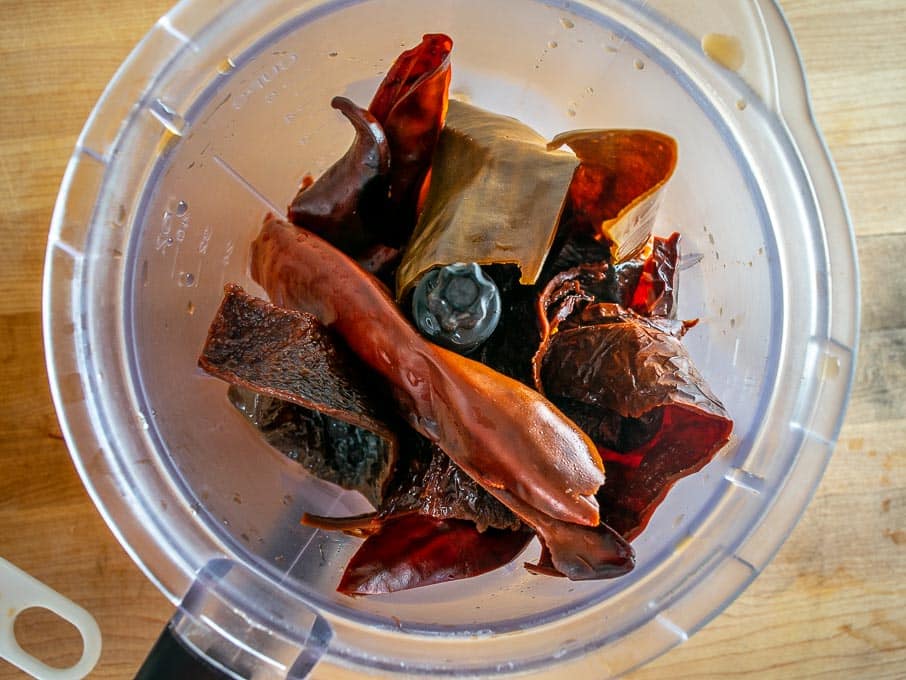
Combine well and add this chile puree to the broth/hominy in your main pot. Be sure to rinse out the blender with a splash of liquid to get it all into the pot.
Then we'll add:
the seared pork pieces (along with any juices)
1 tablespoon Mexican oregano
1/2 teaspoon cumin
pinch of ground clove
freshly cracked black pepper
1 teaspoon salt
Keep in mind that the salt level will depend on which stock you use. I used some Better Vegetable Stock that is not salted, so I'll have to add more than most peeps.
And by the way, the entire recipe calls for 10 cups of stock -- yes, 10!
But don't fret if you don't have that much -- in the past I've used 4-5 cups of stock along with the rest being water and still got a good result. You're getting so much flavor from the chile puree that you can get by with less stock if necessary.
Bring this up to temp, cover, and let simmer for around 2 hours -- or until the pork is fall-apart tender.
Don't be surprised if you take off the lid and it looks like this:
That's some fat from the pork that's risen to the surface.
You can skim off and discard any extra fat if you'd like, but I'm in the habit of trimming off extra fat before the searing step and just eating what remains after the simmer 🙂
At this point I usually shred the pork pieces on a plate and then add them back to the Pozole. Once you've done that you can take a final taste for seasoning. I added another pinch of Mexican oregano and salt to this batch.
Okay, now the most important part...
How are you serving your Pozole Rojo?!
First take a look at this bowl and note any judgments you may have about it:
Does it look boring?
Well, it's already exploding with flavor and I don't like having too many top layers covering up this rich, hearty deliciousness.
I feel the same about Pozole Verde and this definitely puts me in the minority as most people prefer to build their Pozole to the brim.
Here are the traditional garnishes to consider for your palate:
Thinly sliced cabbage or Iceberg lettuce
Sliced radishes
Avocado bits
Freshly chopped cilantro
Crispy tortilla strips How To Make Crispy Tortilla Strips
Raw onion
Squeeze of lime
I kept it simple and went with some crispy tortilla strips, freshly chopped cilantro, and a squeeze of lime.
And it was dee-licious.
Not only is the flavor of the broth scrumptious, but the hominy turns it into a hearty, satisfying meal that can work wonders on any grumpy faces in the house.
To summarize, Red Pozole is awesome 🙂 And it's more than willing to accommodate your palate (and your pantry). Here are the main options to consider when making a batch:
Which dried chile combo are you using? Try to use around 3-4 oz. worth of dried chiles, with Anchos being the star attraction. This batch used 5 Anchos and 4 New Mexican chiles, and that came out to around 3.5 ounces.
How much hominy are you using? Use a single 28 oz. can for a brothy batch of Pozole, or use two cans for a chunkier version.
How much stock are you using? I used 10 cups of Veggie Stock, but you'll get so much flavor from the chile puree that you can get by with using a combo of 5 cups stock, 5 cups water if you don't have enough stock around.
Are you using the chiles' soaking liquid? Be sure to take a taste of the chiles' soaking liquid. If you like it then use it to blend the chiles. If it tastes bitter to you then discard it and use stock to blend the chiles.
How are you garnishing your Pozole? Once cooked the Pozole is already beyond satisfying so don't sweat the garnish too much! Just add what sounds best to you and all will be well in Pozole land 🙂
Okay, I hope you find this recipe helpful in the coming months. It makes a big batch and there's something reassuring about having leftover Pozole Rojo in the fridge 🙂
Buen Provecho.
Want the latest recipe? Click your favorite from these options and follow me: Instagram, Facebook, Pinterest, TikTok, YouTube.
Update: I just made a batch of Vegetarian Red Pozole. You can see that recipe here.

Red Pozole
Ingredients
- 5-6 Ancho dried chiles
- 4-5 New Mexican dried chiles (or Guajillos)
- 2-2.5 lbs. pork shoulder
- 1 onion
- 6 cloves garlic
- 10 cups stock
- 1-2 cans hominy (28 oz. can)
- 1 tablespoon Mexican oregano
- 1/2 teaspoon cumin
- pinch of ground clove
- freshly cracked black pepper
- 1 teaspoon salt (plus more to taste)
Optional garnishes:
- thinly sliced cabbage/lettuce
- sliced radishes
- raw onion
- avocado
- cilantro
- crispy tortilla strips
- lime
Instructions
- Start by de-stemming and de-seeding the dried chiles. Give the chile pieces a quick roast in a 400F oven for 1-2 minutes. Alternatively, you can flash roast them in a skillet on the stovetop for 15-30 seconds per side. Cover the chile pieces with hot tap water and let them reconstitute for 20-30 minutes or until you need them.
- Preheat your soup pot to medium high and add a glug of oil. Cut the pork shoulder into chunks in the 1-1.5" range. I usually trim off and discard any large pieces of fat. Sprinkle generously with salt and sear the pork pieces in the soup pot until turning brown on all sides (tongs work great for this step). Set the seared pork aside until you need it.
- Finely chop an onion and add it to the soup pot along with another glug of oil. Cook over medium heat until softened (5-7 minutes) and then add 6 minced garlic cloves. Briefly cook the garlic. Scoop about half of this onion-garlic mixture into a blender where it will become part of the chile puree, and leave the other half in the soup pot.
- Add 8 cups of stock to the pot along with the drained and rinsed hominy. I used a single 28 oz. can of hominy for this batch and that will make your Pozole a little more brothy. For a chunkier Pozole you can double the amount of hominy and use two cans.
- Before draining the chiles be sure to take a taste of the soaking liquid. If you like the taste then you can use it to make the chile puree. If it tastes bitter to you then discard it and use stock to blend the chiles (that's what I did for this batch).
- Drain the chiles and add them to the blender. Half of the onion-garlic mixture should already be in the blender. Add 2 cups of stock and combine well.
- Add the chile puree to the soup pot. You can optionally strain it before adding it to the pot, but I usually blend it fine and skip that step. Straining it will remove any unwanted seeds or bits of skin, but it won't alter the flavor.
- Add the seared pork pieces to the pot, along with any leftover juices that accumulated while they were waiting around.
- Add the remaining spices to the pot: 1 tablespoon Mexican oregano, 1/2 teaspoon cumin, a pinch of ground clove, some freshly cracked black pepper, and 1 teaspoon salt. Stir well and bring to a simmer. Lower heat to maintain a simmer, cover, and let simmer for approximately 2 hours or until the pork is fall apart tender.
- Once you're happy with the tenderness of the pork you can use two forks to shred it into bite-sized chunks, then returning it to the pot and mixing it in well. At this point you can optionally skim off and discard any fat that has accumulated on the surface (I usually trim off excess fat before searing the pork pieces, but then let the remaining fat become part of the Pozole.)
- Take a final taste for seasoning. I added another pinch of salt and more Mexican oregano to this batch. Keep in mind that salt level will depend on which stock you're using.
- Serve immediately with your choice of garnish. I kept this batch simple and topped with cilantro, crispy tortilla strips, and a squeeze of lime. Other good options include: thinly sliced cabbage or Iceberg lettuce, sliced radishes, raw onion, and sliced avocado.
- Store leftovers in an airtight container in the fridge where it will keep for a few days. To reheat simply add Pozole to a saucepan over medium heat and cook until simmering. If it seems thick when re-heating I will add a splash of stock (or water) to thin it out.
Like this flavor?! You can use similar ingredients to make an awesome batch of Chili con Carne.
Still hungry?!
Want to receive Mexican Please recipes via email when they are posted? Sign up below to subscribe. All recipes are spam free.


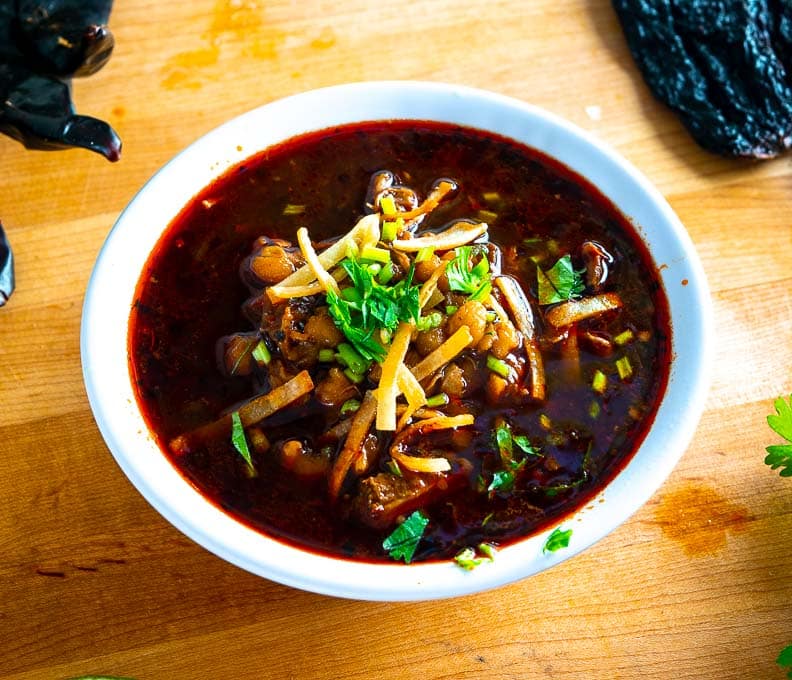
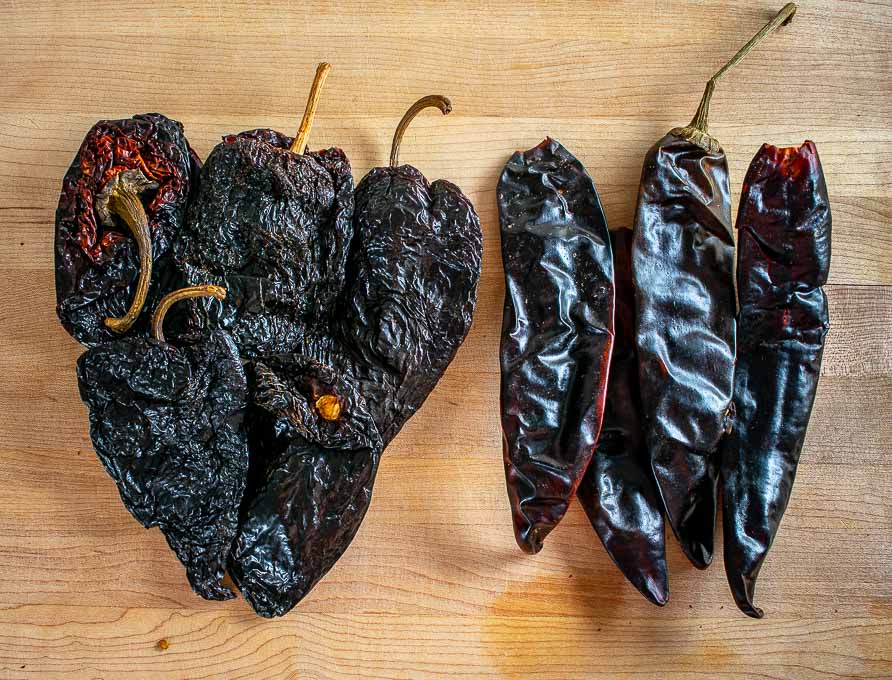
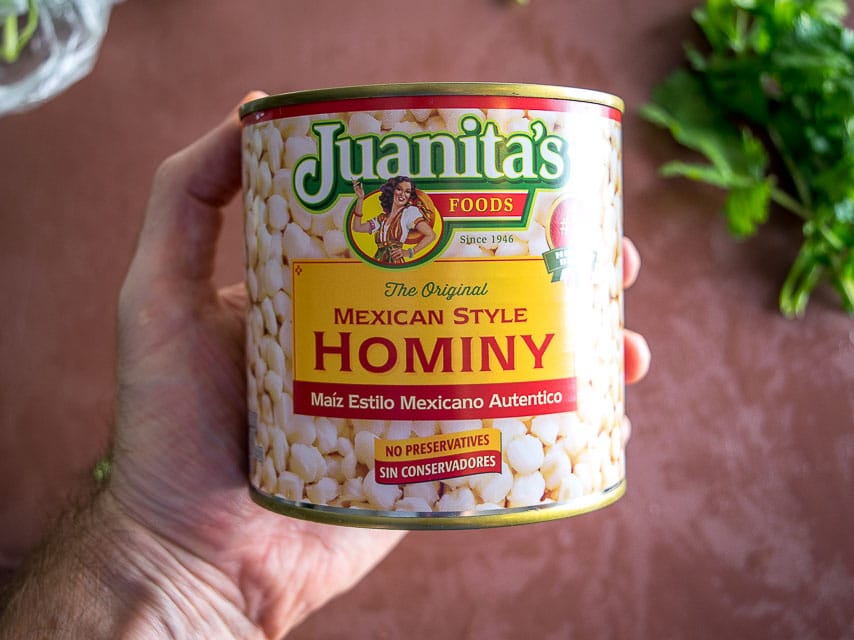
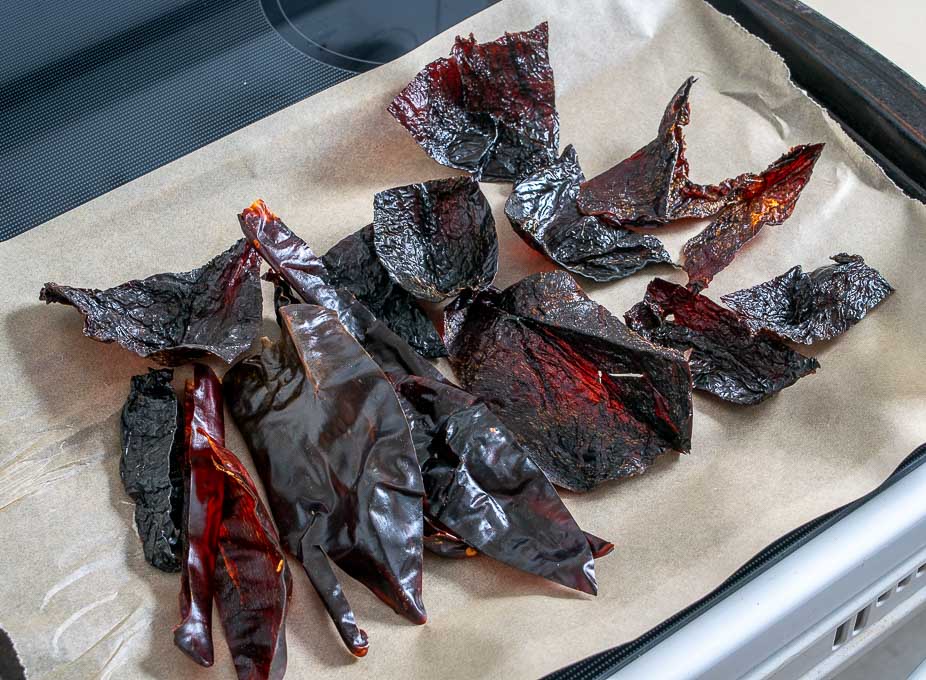
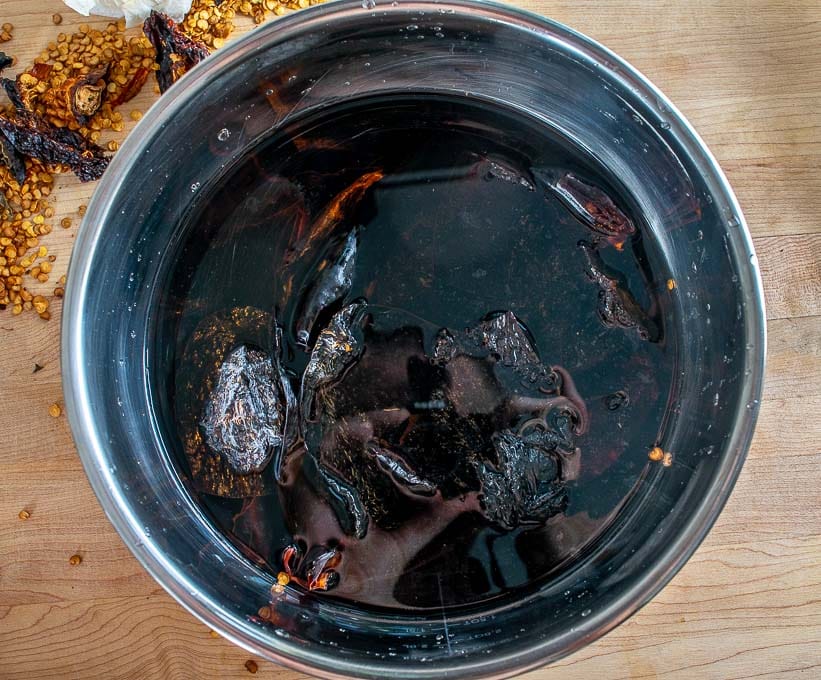
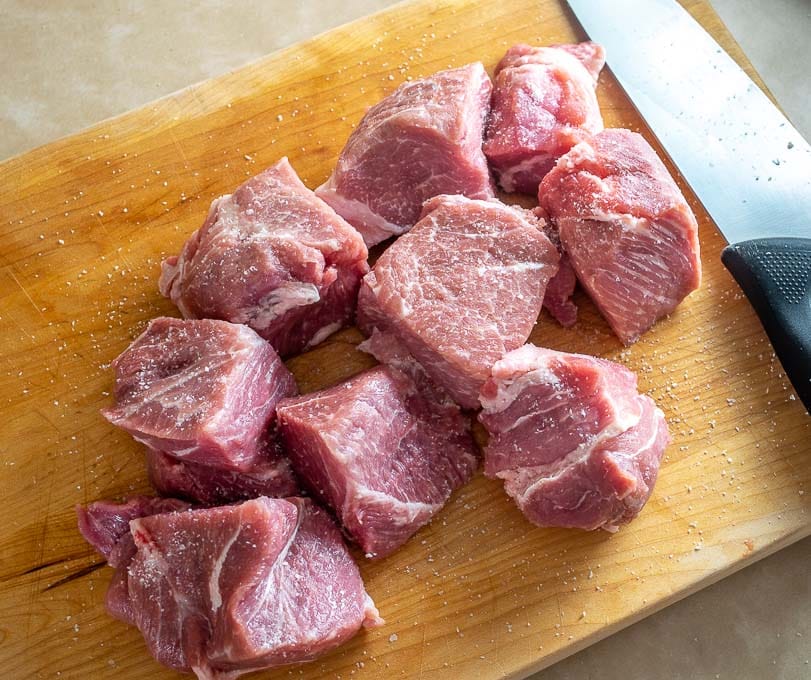
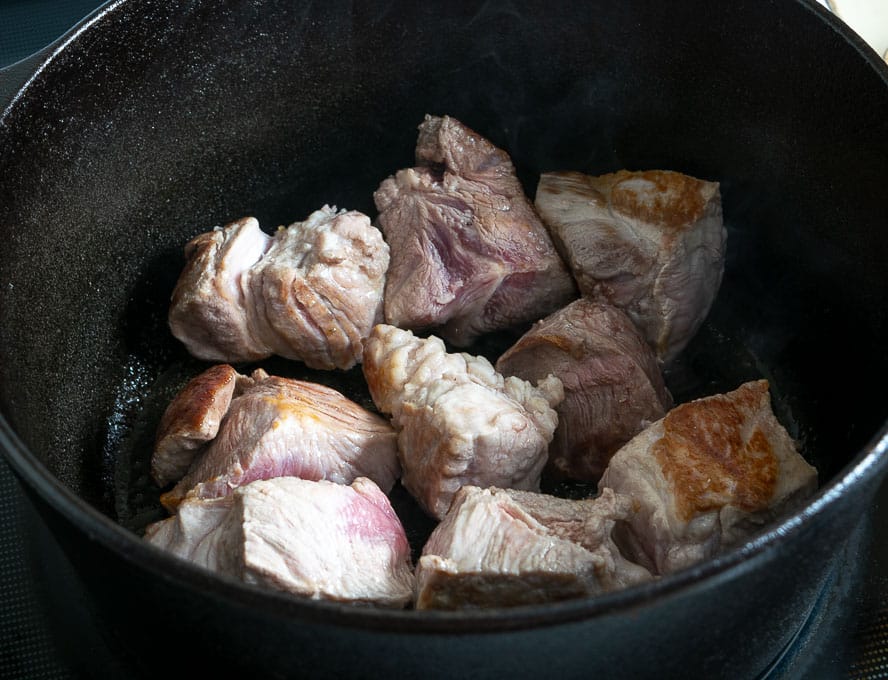
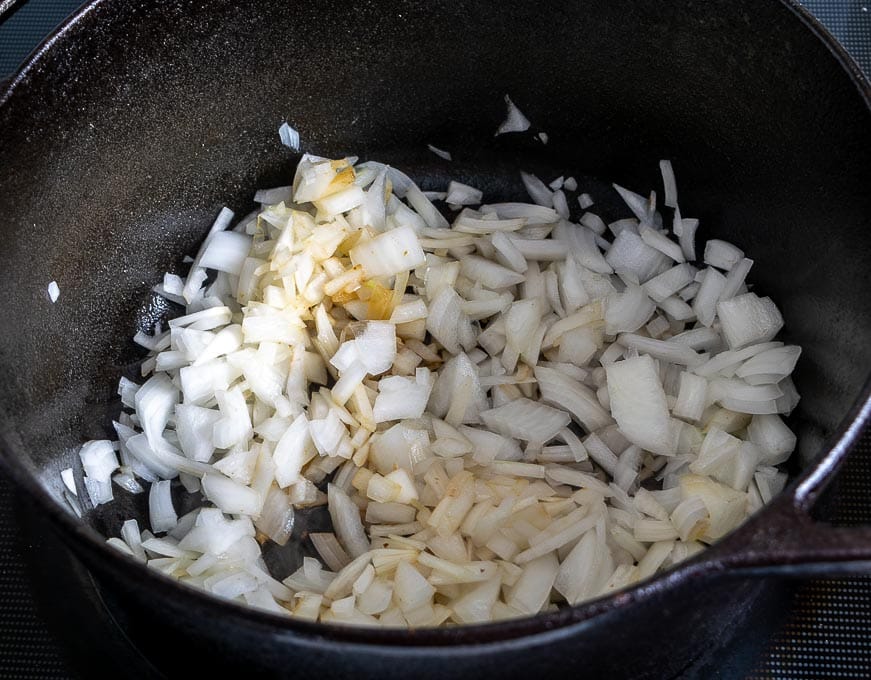
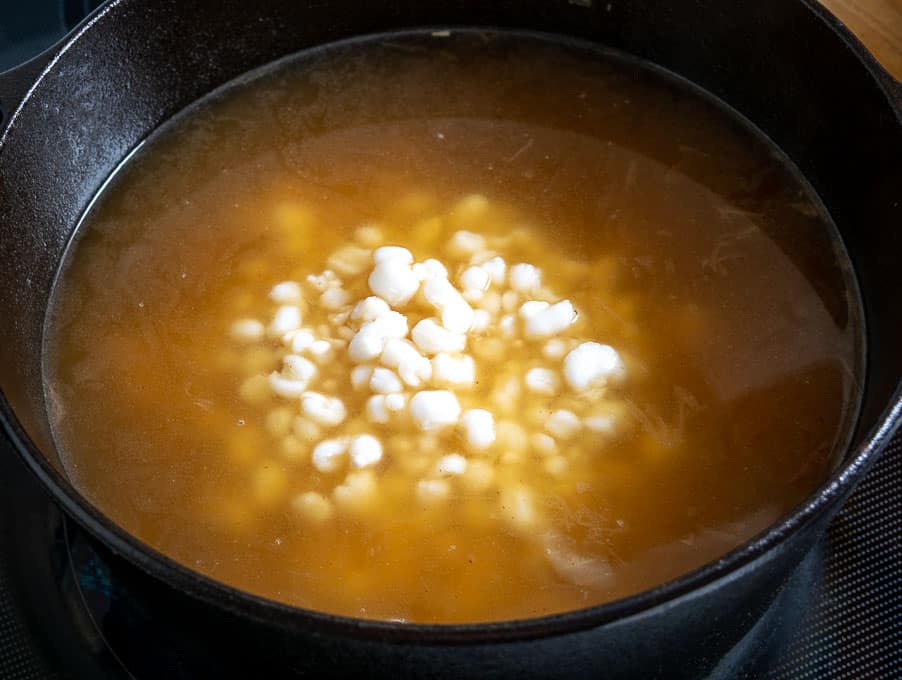
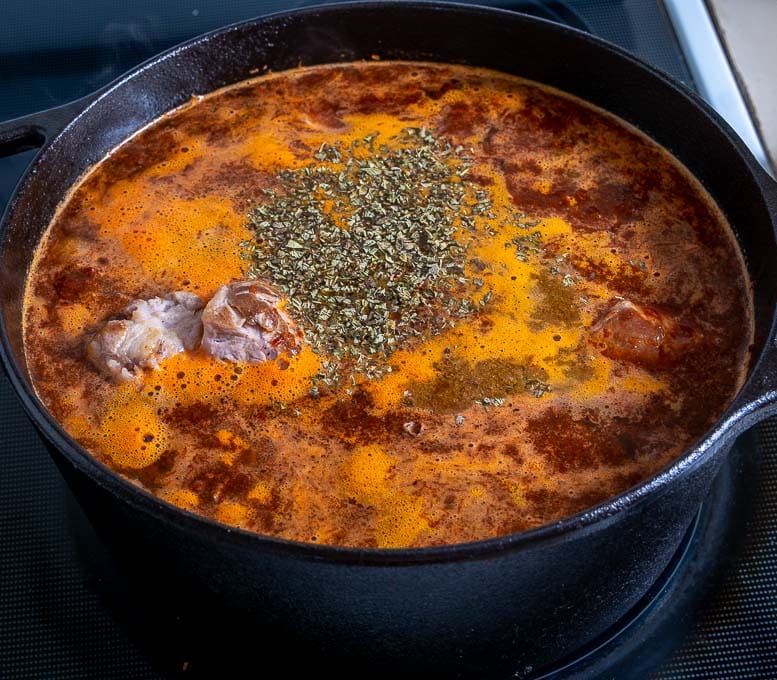
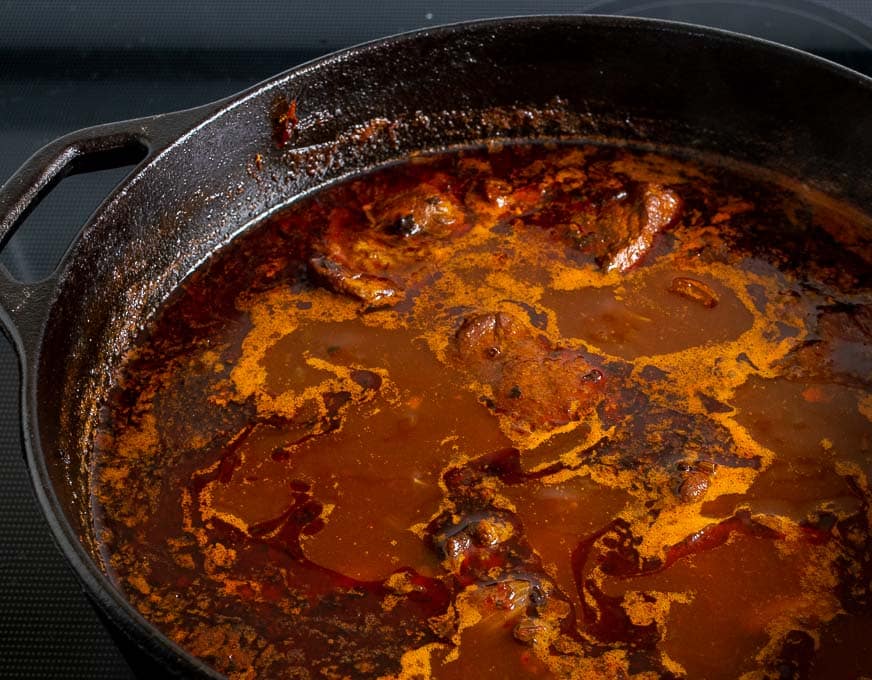
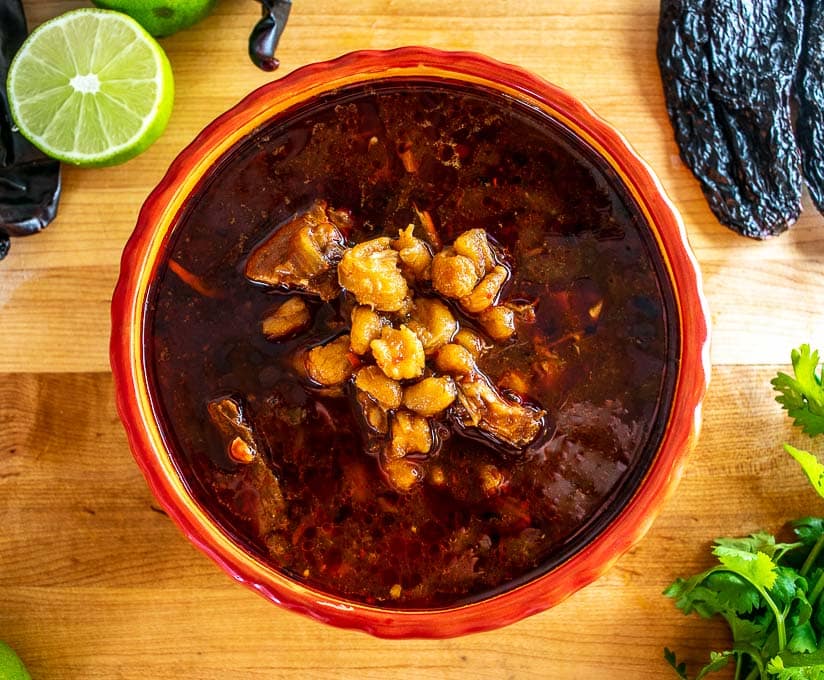
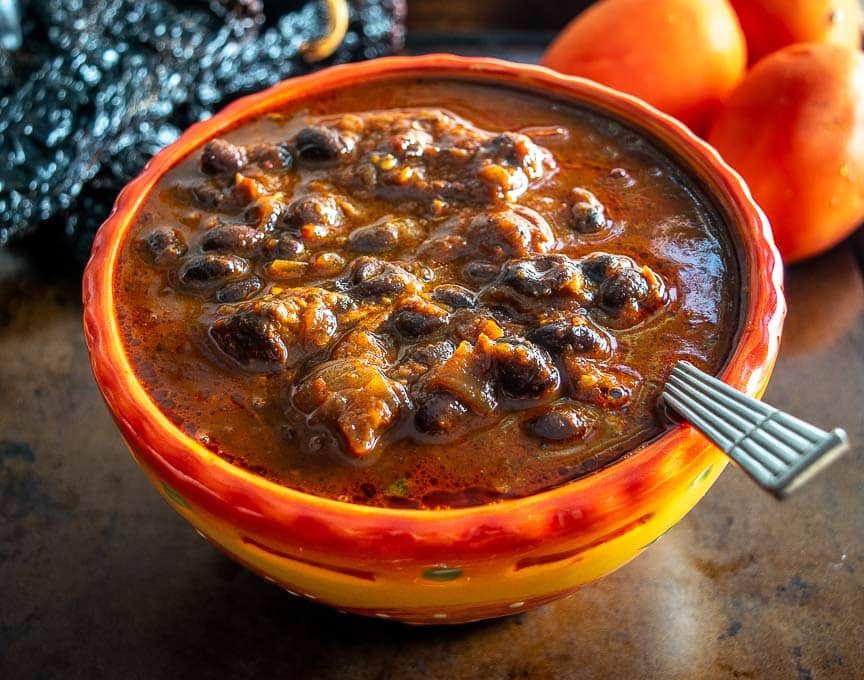
Laura
We were introduced to red pozole on a trip to La Penita de Jaltemba. It was Christmas and had been raining all week and we felt lonely. My husband trekked down the hill to a small place where there were huge pots on the stove and lots of laughter and he came back with big styrofoam cups full of pozole and a container with toppings. It was perfect. We've tried various recipes and yours is by far our favorite. Last night we were low on New Mexican chiles so we subbed mulatos for half of them and loved it.
Patrick
Ahh good news, that scene you described seems to sum up Pozole quite well 🙂
Erin
I've been thinking about this recipe for a while and finally decided to make it today. I was recently in Mexico and bought various chiles at the outdoor mercado, so I decided to use Ancho and Mulato chiles (I read all about the chiles on your page). I generally make pozole blanco then add spices to each individual bowl I eat. This recipe was very tasty and for me, had just the right amount of heat, which wasn't overpowering. The chile also added a nice depth and complexity to the broth. Thank your for sharing your knowledge and this recipe!
Patrick
Ooh nice, thanks much for your notes Erin, would love to try this Pozole with some Mulatos 🙂 Cheers